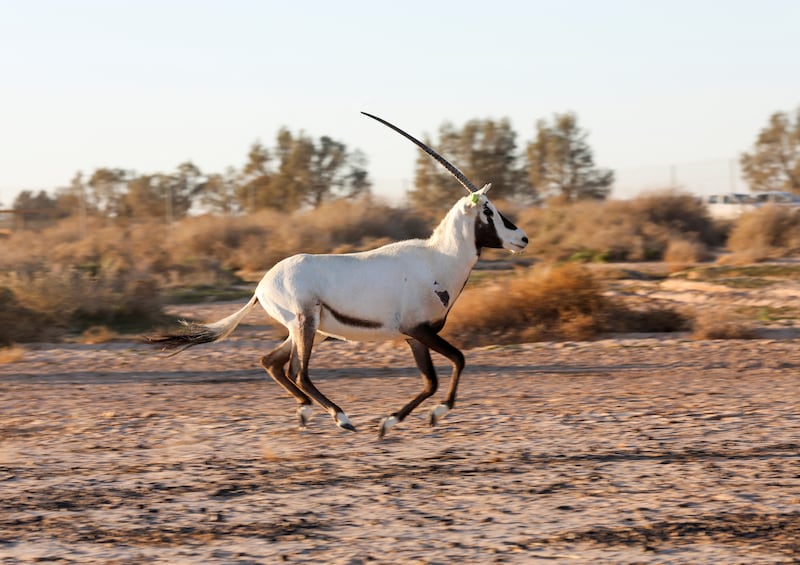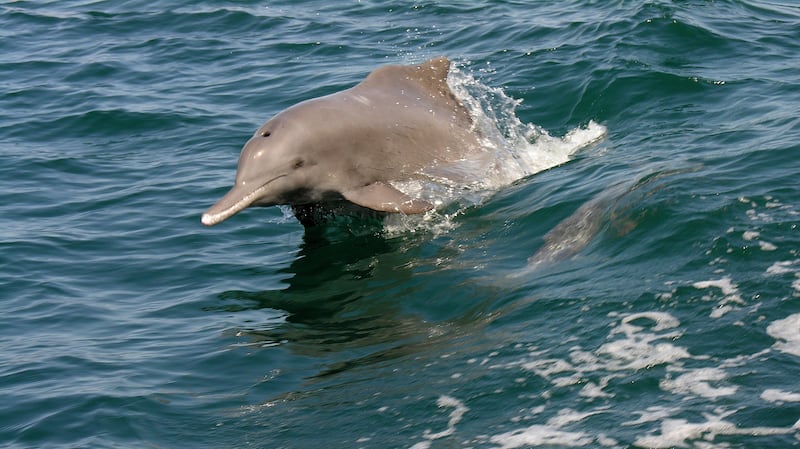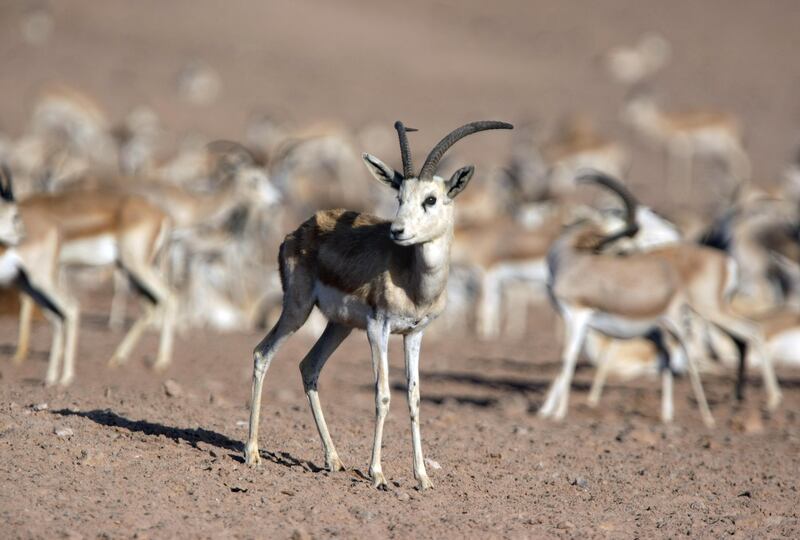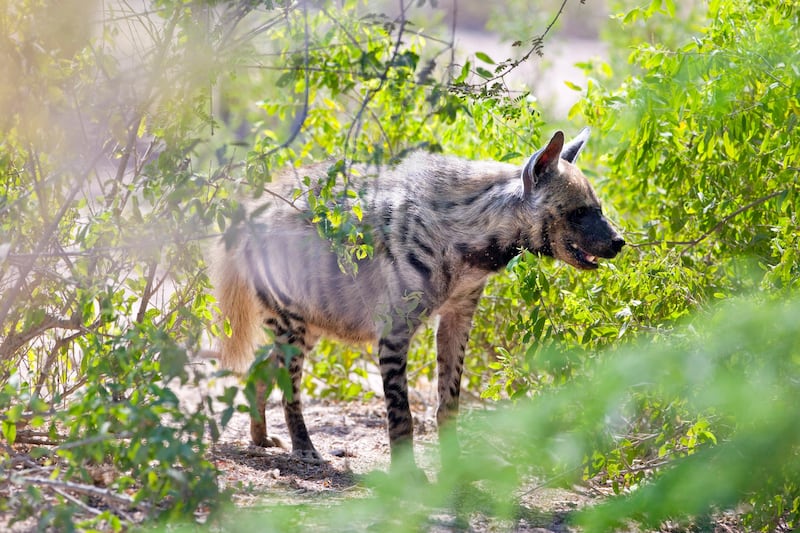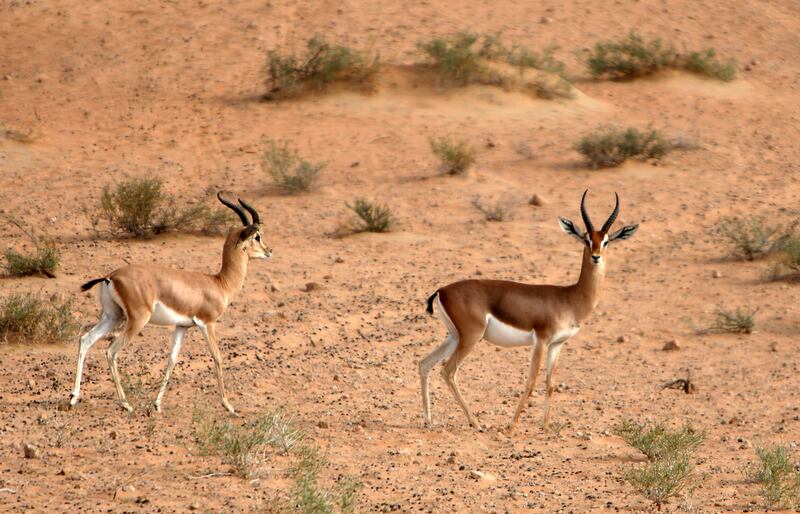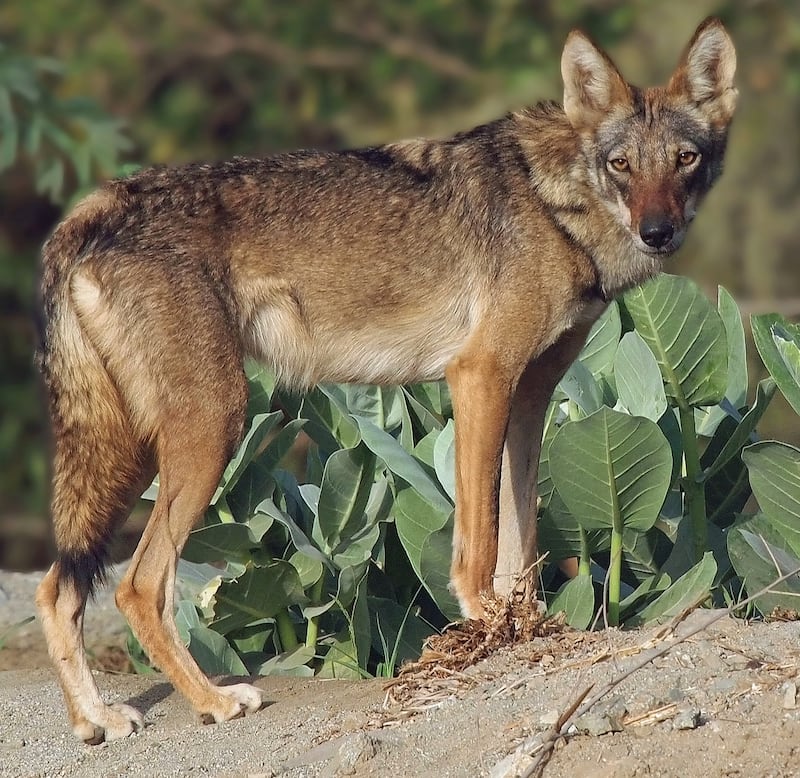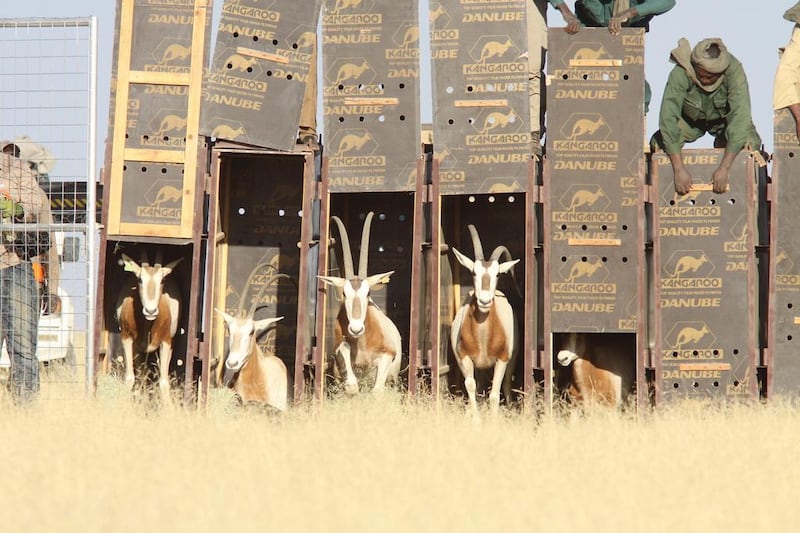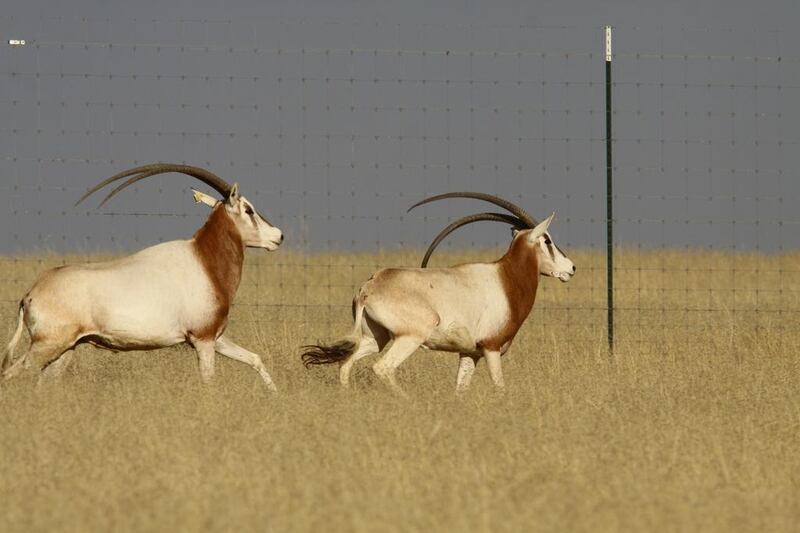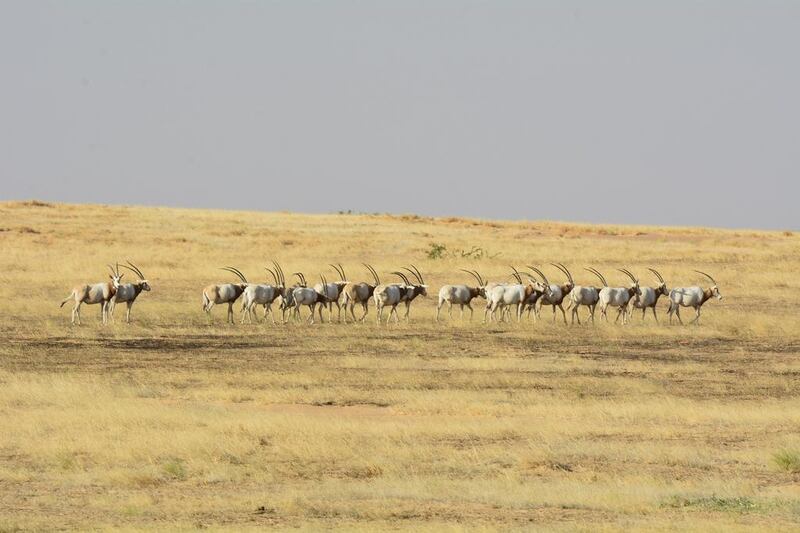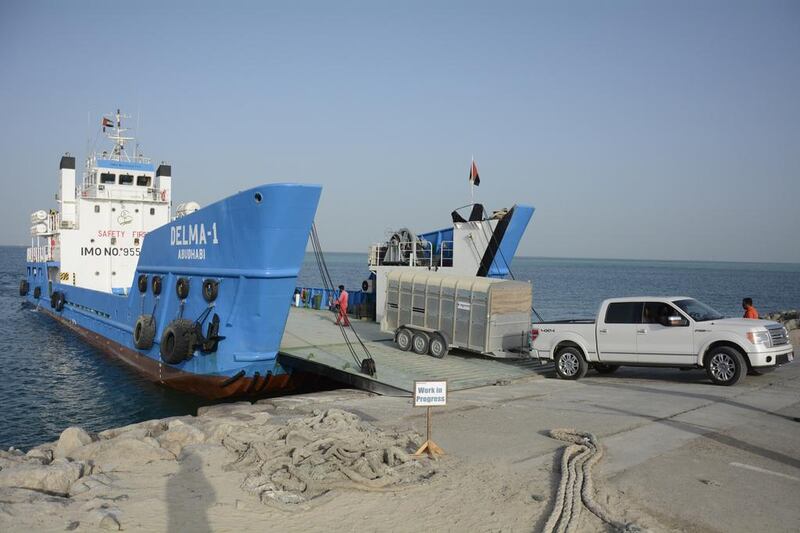Almost half of all mammals in the UAE are endangered, according to new government research that looked at the extinction risk for 1,167 species in the country.
The UAE national Red List issued by the Ministry of Climate Change and Environment looked at native and alien species and found 46.7 per cent of all mammal species in the country were endangered.
The Red List Index shows trends in overall extinction risk for species and is used by governments to track their progress to reduce biodiversity loss.
On the endangered list is the Arabian tahr, a mountain goat and the only endemic species of mammal in the UAE.
Endemic refers to a species that is found in only one part of the world.
Other species of mammals on the Red List that are endemic to the Arabian Peninsula include the Arabian oryx, gazelle and rat, the sand gazelle, and the jerboa, a hopping desert rodent with oversized ears and hind legs.
The report found 53 per cent of bird species in the UAE were endangered, while 14 per cent were considered near threatened.
“Protecting wildlife and ensuring its sustainability is one of the strategic priorities in the UAE’s efforts to preserve the environment,” Minister of Climate Change and Environment Mariam Al Mheiri said.
“To achieve this objective, we established an integrated legislative framework to sustainably manage and protect wildlife in line with international conventions.”
Inside the UAE breeding centre fighting to save endangered species
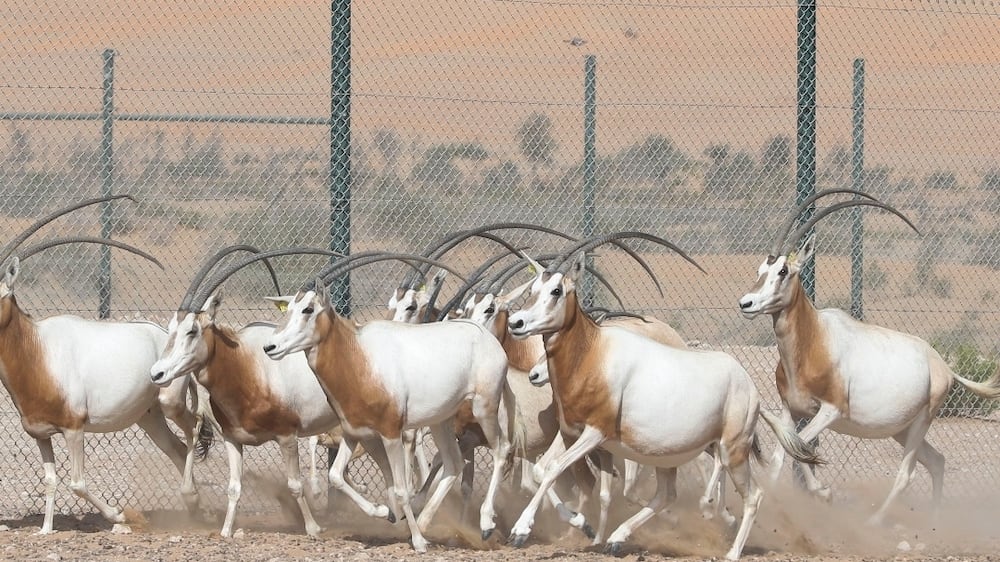
They include the Convention on Biological Diversity and the Convention on the Conservation of Migratory Species of Wild Animals.
The project monitored a wide variety of terrestrial mammals in diverse environments across the UAE, and found that of all native species, carnivores constituted 28.2 per cent, rodents 20.5 per cent and bats 30.7 per cent of confirmed native species.
Researchers reported the extinction of three species of mammals in the wild – the Arabian wolf, the Arabian leopard and the striped hyena.
They also evaluated the status of select marine species, including 126 species of bony fish, 80 species of cartilaginous fishes and 66 species of coral.
The country’s seas are home to a variety of marine mammals that represent a key part of marine wealth, not only locally, but also internationally.
There are 18 registered species of cetaceans (whales, dolphins and porpoises) and one species of sirenians – the dugong.
In addition, there are major groups of at least four species of marine mammals, including the humpback dolphin.
The species is identified by a distinctive hump, elongated dorsal fin and small pectoral fins. It can weigh up to 139 kilograms and grow to about 2.5 metres in length.
Although little is known about the Indian Ocean humpback dolphin, it is usually found living within three kilometres of the shore, in water less than 25 metres deep.
Studies indicate that the UAE has the largest concentration of this species in the world and which accounted for almost half of all dolphin sightings in the country.
The public is being encouraged to report sightings to enable research.
They can be logged at www.uaedolphinproject.org, adding the date, time, location and, if possible, visual proof.
Distribution maps for endangered species have been developed to devise conservation plans and programmes for these species and their natural habitats.
“The UAE has an impressive track record in species conservation,” Ms Al Mheiri said.
“Our work has contributed to the rehabilitation of multiple endangered species through launching breeding programmes and declaring and expanding terrestrial and marine protected areas.”
